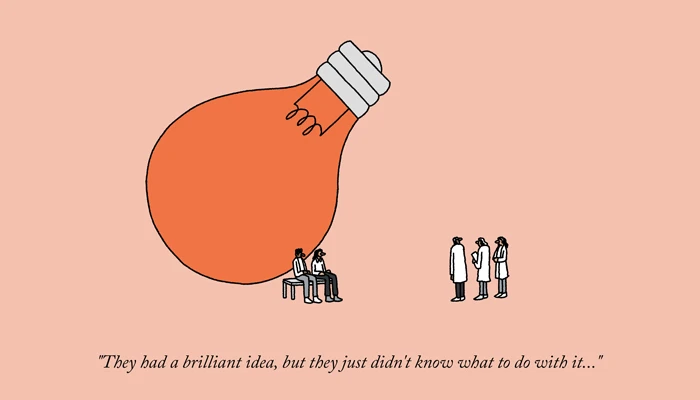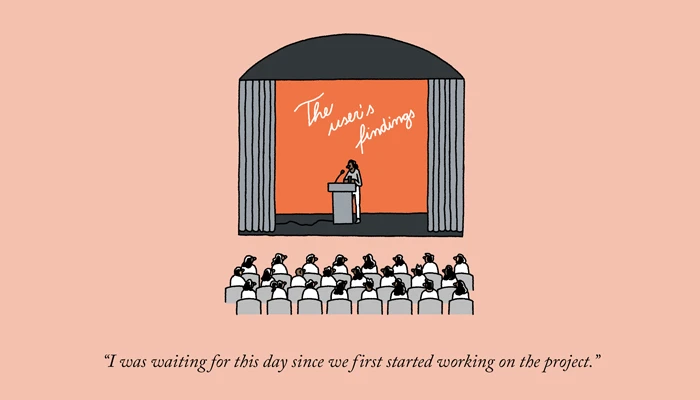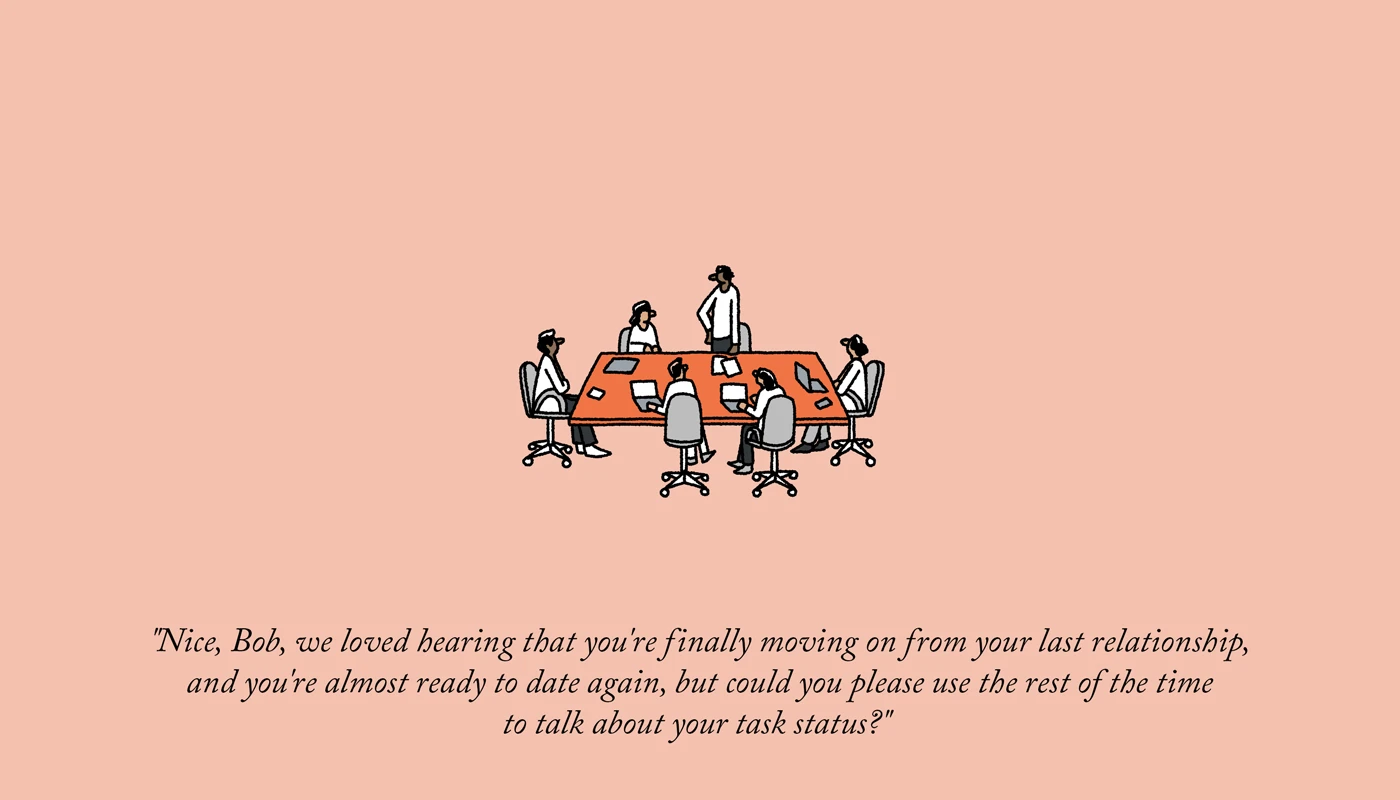Steps in New Product Design and Development
A business starts with a simple product idea. Maybe you scribbled that idea on a napkin three months ago, or maybe you started making calls the moment inspiration struck. Now, you need a concrete way to take your product from concept to customer. The product development process is how you'll get there.
This process is the first stage in the complete product life cycle. There are two main pieces to the development phase: First, you'll conduct market research and analysis. Second, you'll create proof of concept, test, and launch your product.
Use this guide to navigate the five main stages of the new product development process (NPD). We'll also share some tips on fundraising for product research and creation.
Choosing a product development model
It's common to see claims that most products are doomed from the start. Many business publications and experts perpetuate the myth that 80% to 95% of products fail. (Consumer goods and services like Juicero, Google Glass, and Amazon Spark come to mind.)
But empirical research conveys a brighter picture. Data shows that the product failure rate is actually closer to 40%, depending on the industry. That's a lot of room for success.
Using a well-defined development strategy helps you avoid common product pitfalls. There are a number of well-known models that have provided guidance to startups and large firms for decades. Here are a few tried-and-true methods:
- The Stage-Gate model: Purportedly the most popular development process, the Stage-Gate model is an eight-step roadmap for successfully evaluating, building, and launching a product.
- The IDEO process: This is a user-centric strategy that lets real-world consumer observation lead product development. This process takes its name from the design firm of the same name.
- The Booz, Allen, and Hamilton (BAH) model: This framework comprises seven stages. It guides development teams through strategy formation and focuses on minimizing risk.
Regardless of the method you choose, give your team ample development time. Your innovation process could require months or years of trial and error. The complexity of your product should dictate the time you allocate to this phase.
Getting a collection of homemade protein packs to market, for example, will likely take less time than creating a smart heart-rate monitor. Or, you may need to accelerate the pace of your product development to stay ahead of market competitors. Let your product guide your process.
The product development process in 5 stages
Below, we'll take you through each important step of the development process. Learn techniques for ideating, testing concepts, and planning a successful launch.
Stage 1: Brainstorming and ideation

The first stage of the product development process is focused on idea generation. Assemble your team and get product ideas out on the floor. Your deliverables may be a loose roadmap to your final product or a simple list of concepts to research, evaluate, and rule out in the second stage.
Profitable product ideas stem from many different sources. Take advantage of resources like:
- Online consumer trend trackers
- B2B industry publications
- Software marketplaces
- Crowdsourcing platforms
- SEO trends
- Web forums
Idea generation could also begin with a hyper-local issue, like a lack of convenient bike storage in your city, and it can branch out from there. No matter what, you need to start by identifying a bona fide customer need.
Even in this early stage, make sure you can answer questions like: Who is my customer? What specific need(s) will my product satisfy? How will I communicate the value of this product?
A SWOT (Strengths, Weaknesses, Opportunities, and Threats) analysis is another go-to tool in the ideation stage. It's a simple but effective way to avoid sinking time into the wrong product for your target market. Here's an example of a SWOT analysis for a pair of headphones:
- Strengths: Revolutionary product design. Leverage existing relationships with manufacturers.
- Weaknesses: Newcomer to a highly saturated market. Pricing high from the outset. Initially dependent on U.S. market segment.
- Opportunities: Tentative promotional agreement with audiophile influencers. Popularity of autonomous sensory meridian response content (ASMR). Strong consumer demand for high-fidelity audio equipment.
- Threats: Large number of existing products. Numerous market players who can respond quickly to our product. New studies on ear damage in minors due to headphone usage.
Use your product SWOT analysis to single out the strongest product concepts before you start requesting customer feedback in the next stage.
Stage 2: Research and idea screening

The ideas you've generated need to be filtered through an objective screening process. Ideally, you'll use a combination of internal and external processes to get the most actionable data from this phase. You'll gauge your target customers' response and secure product validation.
Before assembling focus groups or sending out surveys, seek feedback from your current hires. Or, work with a business consultant if you don't already have a sounding board with industry knowledge. This helps you avoid the pursuit of expensive or unnecessarily complex ideas.
After you've conducted preliminary research and identified your target market, open up response channels. Modern tools have dramatically simplified how you can assess customers' needs—pain points, price range, features, and benefits. These are common methods:
- Sending online surveys and polls
- Hosting social media Q&As
- Running product giveaways
- Creating a "coming soon" landing page
- Running targeted paid advertisements
- Using Google Trends to research demand
This stage seeds your marketing strategy. Pull potential taglines, ad campaigns, and customer personas from the consumer feedback.
Competitor analysis is also essential. Get a clear picture of the number and size of your current competitors and their product offerings. If there are similarities, you may discover your niche.
Stage 3: Concept development
At the end of screening, only a few well-received and realistic new product ideas should remain. You'll need a comprehensive plan and blueprint before launching into a prototype.
Assess the costs of designing, manufacturing, packaging, and distributing your leading product concept. You may plan to use third-party vendors or create internal systems where possible.
Identify the human and capital resources you'll need, and the core features that must exist for a working product. In addition, begin to break out a potential marketing plan and larger business strategy, including revenues and market share for this product.
Take note of legal considerations, too. All this information is critical to building a strong business case and securing investors later on.
Stage 4: Prototyping and evaluation
In this stage, you'll breathe life into your product concept. It's time to move into design and production. You'll create an actual prototype or an approximate mockup. Some businesses run a small-scale release at this point. It's also an option to assemble a select group of your target customers to evaluate the nearly completed product.
This is one of your last opportunities to work out major technical issues or add highly demanded features. If you're developing an app, for example, you'll need to run beta tests.
As we mentioned earlier, your planned product will determine the cost and length of time needed for this stage. Required industry licenses, internal policies, and other requirements will play a role, too.
An example helps illustrate this. Say you want to open a small pop-up restaurant or travel to a trade show to sell (or give away) your soda product. You may be required by your state or locality to get a food handler's certification first.
Based on this final concept testing stage, you can make your last tweaks and determine that you're ready to move into large-scale production and officially launch your startup.
Stage 5: Product rollout and iteration

Also known as commercialization, this is when your product finally enters the marketplace. This is essentially the launch of your minimum viable product (MVP). It's common for your first release to include only the core features so that your product can simply move forward and start generating sales figures.
By the time of your product launch, your supporting operations should be prepared. Your customer and technical support should be ready. Plus, you should have determined your pricing and distributed necessary details to the rest of your team—sales, marketing, distribution, and so on.
Utilize your previous research and testing rounds to determine when and how to promote your products. Test marketing ideas with your target audience and iterate as needed.
Funding your product development
Product research and development is a resource-heavy process. If you're a startup with limited working capital, you'll likely need to apply for some form of business credit. Below, we've included startup financing opportunities and tips on securing them:
- 11 ways to build business credit
- 6 startup business loans
- 7 working capital loans
- Getting your next (or first) round of funding
From "a-ha!" to a viable product
Your new product could go through hundreds of evolutions between idea and first sale. Each stage of the product development process will play an important part in its success.
Whichever strategy you choose, make sure you're seeking objective customer insight at each step. Your model should also deliver hard data that helps you generate interest leading up to your launch.
Remember, diligent preparation and abundant resources won't save a product that doesn't meet consumers' needs. Use this pre-launch period to get closer to achieving that optimal product-market fit.
About Brex
Brex is an all-in-one finance solution for every business. Enjoy refreshingly easy payments, credit cards, and expense tracking— all in one place. Get started today.
Steps in New Product Design and Development
Source: https://www.brex.com/blog/product-development-process/
0 Response to "Steps in New Product Design and Development"
Post a Comment